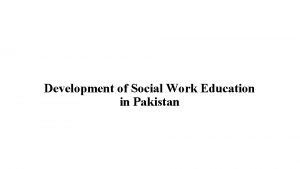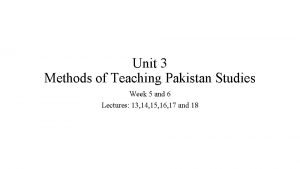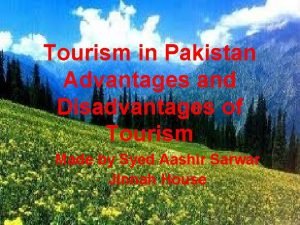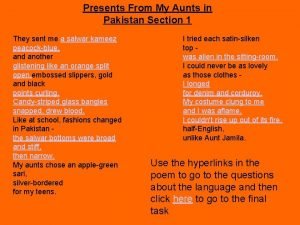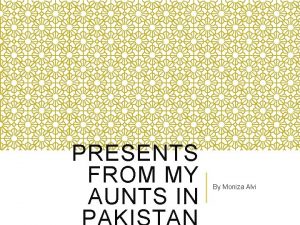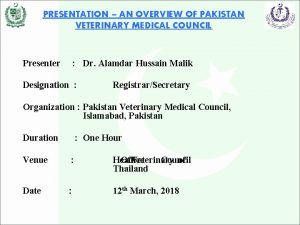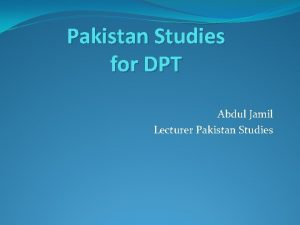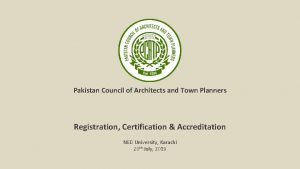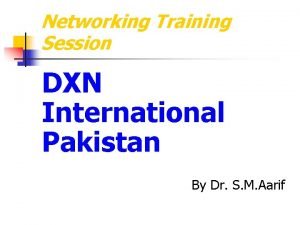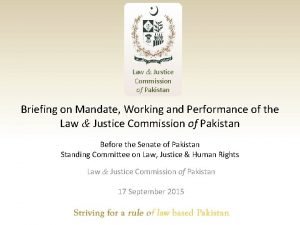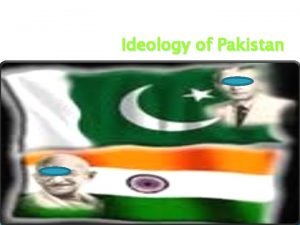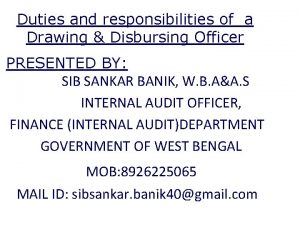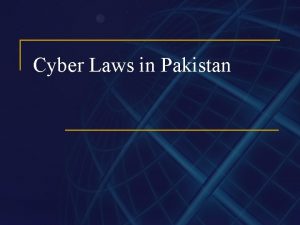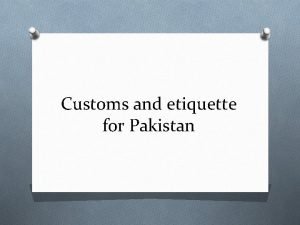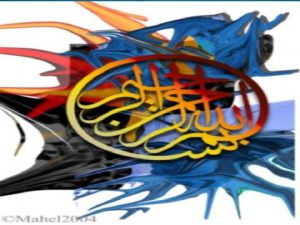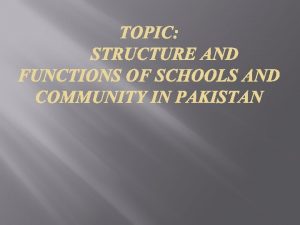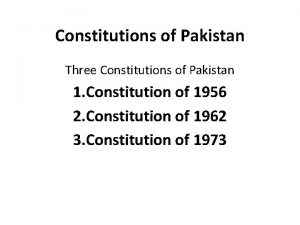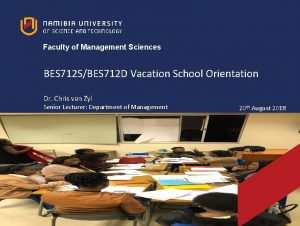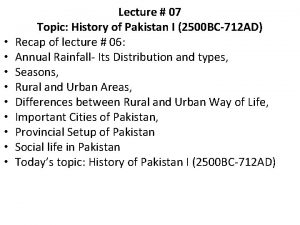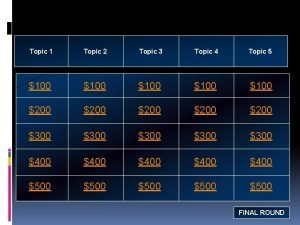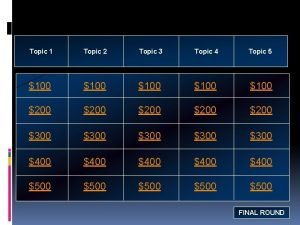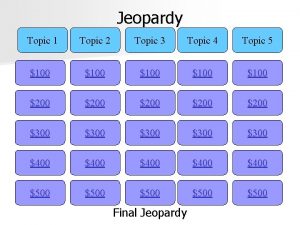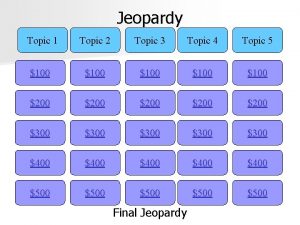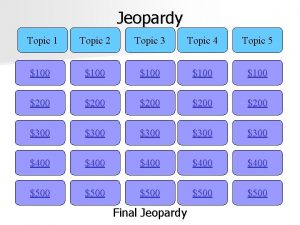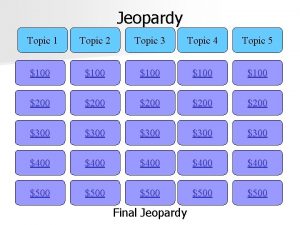Lecture 08 Topic History of Pakistan II 712

































- Slides: 33

Lecture # 08 Topic: History of Pakistan II (712 AD- 1526 AD) Recap of Lecture # 07 • Why learn history? • Indus Valley Civilization 2500 -1500 BC • Special features of Indus valley Civilization • The Aryan Civilization: 3000 -2000 BC • The Persian Empire: 520 BC

Cont. Alexander- the great: 336 -323 BC The Mauryan Empire & Asoka: 269 -233 BC The Greeks & Ghandhara Civilization: 175 - 160 BC The Kushans: (the next wave of invaders from central Asia): 50 AD • Gupta Empire (320 -720 AD) • HUNS Invasions & (710 AD) • Muhammad bin Qasim 712 AD • •

Mahmud Ghaznwi: 998 – 1030 AD • Sultan Mahmud Ghaznawi at the age of 27 announced his claim to the throne of Afghanistan. He was the son of Turkish slave named Sebktigin. • In 1001 Sultan Mahmud captured Peshawer and in 1005 make it center for his forces. • He expanded his kingdom through some 17 invasions of the Punjab and northeastern India.

Cont.

Muhammad Ghori: 1185 -1206 AD • After Mahmud along this historic high road came Shahabuddin Muhammad Ghori (1185) who established Muslim rule in Delhi for the first time by defeating Prithvi Raj. • He had has the credit to establish the first Muslim in Delhi. • In 1206, he was killed while offering his evening prayer.

Cont.

Slave Dynasty Qutub-ud- Deen Aybak (1192 -1210) • Qutbuddin was born somewhere in the area near Afghanistan; • Qutbuddin rose through the ranks to become the Emperor Muhammad Ghauri's most trusted general. • Qutbuddin Aibek was patron of art and architecture. One of the most prominent is "Qutib Minar" started by Qutbudin Aibek but completed by his successor Shamsuddin Iltutmish. • He died while playing polo in Lahore

Khalji Dynasty: (1290– 1320) • Khaljī dynasty the second ruling family of the Muslim sultanate of Delhi. • This dynasty, like the previous Slave dynasty, was of Turkish origin, though the Khaljī tribe had long been settled in Afghanistan. • Its three kings were noted for their faithlessness • The first Khaljī sultan was Jalāl al-Dīn Fīrūz Khaljī,

Cont.

Sayyid and Lodhi Dynasty: • Delhi Sultanate has been controlled by several ruling powers over the period of Indian history. • Sayyid and Lodhi Dynasty are two of the major rulers of Delhi, which have played significant role in the history of Delhi Sultanate before Mughal empires started ruling over India. • Sayyid Dynasty empowered India for about 37 years. Khizar Khan was the founder of the Sayyid Dynasty.

Lodhi Dynasty (1451 1526) • Compared to Sayyid, the Lodhi Dynasty was a better ruling empire who was in power for about 75 years. • Established by Buhlul Lodhi in 1451, Lodhis ruled Delhi till 1526. Buhlul Lodhi was one of the successful rulers of his time. He expanded his dynasty by invading the neighboring states.

Cont.

End of Salateen & European Entrance Muhammad bin Qasim: 712 AD Mahmud Ghaznwi: 998 – 1030 AD Muhammad Ghori: 1185 -1206 AD Qutub-ud- Deen Aybak (founder of Dehli Sultanate starched from Punjab in the west to the Bihar region in the East)1192 -1526 AD • Vas Code Gama, a Portuguese navigator entered in subcontinent in 1498 AD • Start of Mughal Era from 1526 AD • •

Mughal Empire • Zaheer-ud-Deen Baber 1526 AD • Effective rulers were: Humayun, Akbar, Jahangir, Shsh Jhan, Aurangzab 1707 AD • Ineffective rulers were remained on the throne at Dehli till 1857 AD

Challenges for Mughals Cultural & Political background of Pakistan Movement 1 - Afghans: (Sher Shah Suri, 1530– Humayun) 2 Ahmed Shah Durrni, 1747 - Aurangzeb 3 - Hindus: (Shiveji & Marhats 1646 – Aurangzeb) 4 - Persians: ( Nadir Shah 1738 – Auranzeb Alamgir) 5 - Sikhs: (Ranjeet Singh, 1799 -1849 – Shah Alam) 6 - British: ( since the time of Jahngeer EIC was trying to capture the power and wealth)

Impact of Islam- Cultural & Religious Influence • Islam gained quick and unmatched popularity throughout the Sub-continent and by the end of 14 th century Islam had entered in all parts of India • Cultural Influence: Why it was attractive for local natives? • No concept of cast system in Islam • Simple, easy and understandable • Introduced a new social system • Promoted tolerance and acceptance (Guru Nanak)

Cont. • Challenged Hindu society • Stressed on the doings of the individual rather than the superiority or inferiority • Islam became for the blessing for lower classes of India • Islam showed them a new way of life • Islam introduced a respectable way of life • Languages like Sanskrit were influenced by Arabic, Persian and Turkish by interaction and a new language Urdu or Hindi developed

Religious Influence • • Islam and Hinduism differ in their attitude towards life Concept of Tawheed in Islam Concept of equality in society in Islam also left its impact on the religious sphere of India and important developments occurred in the Hindu temples and their architectures began reflecting the Islamic way of constructions • Hindu religious leaders started preaching of brotherhood , equality and peace

Cont. • Baba Guru Nank was highly influenced by Islamic teachings • Muslim sufis and mystics presented a liberal view of Islam by the personal examples of piety and humanitarian approach • Hindu reformers gave a serious thinking on eliminating unethical social principles of Hinduism in order to make it more tolerable and acceptable faith • Bhagti Movement was lunched in the 14 th century to bridge the gap between two religions from Hindu reformers

Din-I-Illahi • Akbar occupied the throne of Delhi in 1566, he wanted to promote collaboration with Rajput chiefs for this purpose he married a number of Rajput women and he also appointed Hindus on high level government posts • The Hindu courtiers of Akbar encouraged him to introduce a new religious faith by combining the Hinduism and Islam so he introduced Din-I-Illahi in 1582

Cont. • The immediate result of announcement of Din-i-illhi was the loss of Muslim political loyalty in the Indian society • so Akbar’s attempt to merge the different religious faiths bitterly failed • Din-I-illahi and its effect quickly disappeared with Akbar’s death

Start of Different Religious and Educational Movements from Muslims • Hazrat Mujadid Alfsani challenged the might of Akbar the great Mughal emperor to reestablish the glory of Islam. • He firmly believed in two nation theory. • Hazrat Shah waliullah was a great saint scholar and reformer of eighteenth centenary he adopted a balanced approach and understanding towards religious matters, he introduced the basic beliefs of Islam to the people and promoted Quranic education. He removed misunderstandings between Shias and Sunnis

Shah Wali Ullah’s Services • Shahwaliullah provided leadership in the political field against Marhatas and Sikhs who had created serious problems to the Mughal rulers. • He translated Holy Quran into simple Persian language afterward his two sons Shah Rafi uddin and Shah Abdul Quadir prepared Urdu versions of the Holy Quran.

Syed Ahmed Shaheed Barailvi • Syed Ahmed Shaheed was born in 1786 and begin his carrier as a sawar in service of Nawab Amir Khan the ruler of Tonk. • At that time Punjab was ruled by the sikh ruler Ranjit Singh who treated Muslims harshly and there was no freedom for Muslims to practice their religion so Syed Ahmed decided to launch jihad movement against the sikh rule.

Cont. • Syed Ahmed occupied Peshawar in 1830 • Syed Ahmed shifted to Balakot and faced another attack by the Sikh army the Muslims were defeated in the battle in which Syed Ahmed was martyred in 1831. • Next movement was ‘Farizi Movement’

Fraizi Movement • Haji Shriat ullah started this movement in 1820 • The fraizi movement stressed on the performing the fraiz, religious duties imposed by God and His Prophet. • one hand zamindars who were mostly non-muslims were exploiting the Muslims and on other hand EIC was crushing the Muslim rulers and people.

Cont. • He preached and revived basic Islamic teachings of social life and basic beliefs, till his death in 1840.

Aligarh Movement and Sir Syed Ahmed Khan • The war of 1857 had ended in disaster the British blamed Muslims and therefore took severe actions against the Muslims to eliminate them from the society • At that time all high government civil and military positions were reserved for the Hindus and non. Muslims.

Cont. • Since the social position of the Muslims heavily depended on their government employment this measure clearly effects the economic and social position of the Muslims at that time some dedicated leaders and reformers appeared on the scene to pull the Muslims out of this depression. • Among those leaders Sir Syed was the prominent leader who launched movements for the Muslim revival.

• • Summary Slave Dynasty Qutub-ud- Deen Aybak (1192 -1210) Khalji Dynasty: (1290– 1320) Sayyid and Lodhi Dynasty: Lodhi Dynasty (1451 1526) overview of End of Salateen & European Entrance Mughal Empire Challenges for Mughals

Cont. • Cultural & Political background of Pakistan Movement • Impact of Islam- Cultural & Religious Influence • Din-I-Illahi • Start of Different Religious and Educational Movements from Muslims

Cont. • • Shah Wali Ullah’s Services Ahmed Shaheed Barailvi Fraizi Movement, Haji Shriat ullah Aligarh Movement and Sir Syed Ahmed Khan

Quotation If you would understand anything, observe its beginning and its development. (Aristotle) Thank you
 Scp 712
Scp 712 Suzanna son pack
Suzanna son pack Emily dickinson 712
Emily dickinson 712 01:640:244 lecture notes - lecture 15: plat, idah, farad
01:640:244 lecture notes - lecture 15: plat, idah, farad Clincher example
Clincher example Broad topic and specific topic examples
Broad topic and specific topic examples History of social work in pakistan
History of social work in pakistan Origin and purpose of community development
Origin and purpose of community development History also history physical
History also history physical Unit and textbook method for teaching pakistan studies
Unit and textbook method for teaching pakistan studies Tourism advantages and disadvantages
Tourism advantages and disadvantages List of food laws in pakistan
List of food laws in pakistan Ramsdis
Ramsdis Presents from my aunts in pakistan
Presents from my aunts in pakistan Pear paragraphs
Pear paragraphs Pvmc registration form
Pvmc registration form Definition of pakistan studies
Definition of pakistan studies Linde pakistan limited
Linde pakistan limited Pcatp registration
Pcatp registration Dxn international pakistan
Dxn international pakistan Differences of vocal styles of india and israel
Differences of vocal styles of india and israel Law and justice commission of pakistan
Law and justice commission of pakistan Who translated lahore resolution in urdu
Who translated lahore resolution in urdu Ged testing centers in pakistan
Ged testing centers in pakistan Language translator
Language translator Tropical thorn forest in pakistan
Tropical thorn forest in pakistan Disbursing officer job description government
Disbursing officer job description government Diya pakistan status
Diya pakistan status Cyber laws in pakistan
Cyber laws in pakistan Pakistan cyber law
Pakistan cyber law Meeting and greeting etiquette
Meeting and greeting etiquette Curriculum development process in pakistan introduction
Curriculum development process in pakistan introduction Structure and function of community in pakistan
Structure and function of community in pakistan 3 constitutions of pakistan
3 constitutions of pakistan






